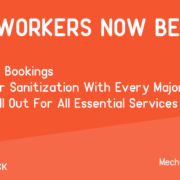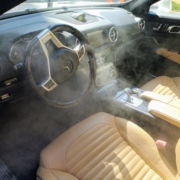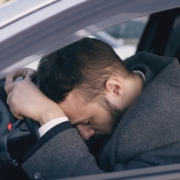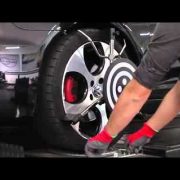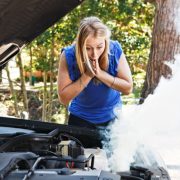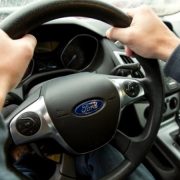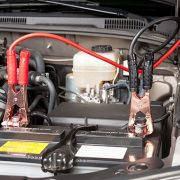Covid-19 – Reduce your risk! Your Car may need to be sanitzed too!
Car Sanitization Can Reduce Your Risk Of Spreading or Contracting COVID-19
Having sanitized hands is great, however, alone, it may is not enough! Our cars are one of the high-touch surfaces we come into contact with regularly over and above that we also tend to lift people, drive our kids in them, etc. However how many of us have thought about sanitizing our vehicles? Not many of us i do not think. This is a very important aspect that has been overlooked and it is very important, for our safety and that of your families!
We Can Beat Covid-19 (corona Virus)!
We have prepared this article based on our research from various sources and we thought that we should share with you.
We know that germs and viruses breed on surfaces and we now know that COVID-19 is said to be able to remain on surfaces for up to 4-6 hrs. This is especially true for porous surfaces that can be found in the car. these are some of the areas that need special attention to and minimize you and your family’s exposure:
- Your steering wheel (including appendages) and gear selector – wash your hands/sanitize prior to handling your steering wheel, so you are not reinfecting it. “The steering wheel has four times the amount of germs found on an average toilet seat, thanks to all the cracks and crevices on the rim and spokes.” Shocking isn’t it!
- Door handles (exterior and interior) – Carry disinfecting wipes with you so that after you car has been sanitized, you keep the germs at bay, by wiping the exterior handle before you open the door and the interior handles before closing or opening your door.
- If you have a touchscreen radio – it’s best to clean that with a microfiber cloth, so as not to scratch it!
- Seats and Hand rests – pay more attention to the spaces between the seat and head rest and well as the sides of the seats
- Seat Belts – we always have to have our seat belts on! So wipe them down with a dissecting wipe before and after you use them!
We here at Car Care Click, have got you!
Some of the most effective method of disinfecting or sanitizing a car is by using foggers. The foggers produce very small droplets of the disinfectant making sure that the reach is far and beyond what the eyes can see. Some of the most effective disinfectant used in homes, hospitals and even in cars contain Didecyl Dimethyl Ammonium Chloride as an active ingredient, which has been proven a braod spectrum disinfectant.
It may be wise to ensure that your vehicle is sanitized as you will bring germs into your car when you have to go for necessitated essential trips during a lockdown.
We are currently offering car interior sanitization for only R400 and we will come to your home. Book your car sanitization today for peace of mind.
Together we can beat this pandemic! Let’s keep hygienic! Contact us or click here to book you vehicle sanitization with Master Mechanics that Care!
THE UBER/BOLT (Taxify) DRIVER’S CAR MAINTENANCE GUIDE
If you drive a Uber/Bolt (Taxify), you rack up a lot of kilometers, which means extra wear and tear. A car in the garage is not making you any money, so keeping up with the maintenance is extremely important. If you’re doing Uber or BOLT (Taxify), driver/owner, here are tips on how to stay on the road and earn the most cash.
First off, if you drive your own vehicle for a living, you likely want to follow the severe service car maintenance schedule. You might be thinking, “Hey, I’m only taking two people to the airport. I never tow, so it’s not severe service.” Actually, it is. The average driver in the South Africa racks up around 30 000 Kilometers per year, but driving full time for a UBER/BOLT (Taxify) service can bring that annual total to 90 000 Kilometers. A lot of those kilometers are spent carrying passengers through stop-and-go traffic in the summer heat nor winter colds. That’s work more in line with a taxi or police car. Let’s use some tricks of the trade from those services.
ENGINE PROTECTION
Oil: While you probably know how often to change your oil in a regular daily driver, an UBER/BOLT(Taxify) car needs a more frequent oil change schedule. You’re looking at lots of idling, stop and go, long periods with the engine on, and a lot more kilometers in general, so you want to use a high-quality oil. Depending on the kilometers you cover, you may be looking at changing the oil as often as every two weeks. While that may seem excessive, it is excellent preventative maintenance.
Filters Change out the oil filter with your oil change, and take a look at the engine air filter, too. These two are key to preventing engine damage. Also change your cabin air filter more often. The usual schedule is once a year, but aim for twice a year to keep your vehicle smelling fresh.
SUSPENSION & BRAKES, TIRES
Brakes Most drivers only change their brake pads every two to four years. With full-time UBER/BOLT (Taxify) work, however, you’re probably looking at every six months and sometimes every three months. Get the highest-rated pads you can afford, and save money by swapping them out and replacing the brakes yourself.
Suspension Shocks and struts are wear items that need replacing, usually only around three times in the average lifespan of a car. If you are a full-time driver, you are looking at annual replacement. No skipping out on this one, as shocks and struts are critical components of the suspension that determine ride quality. No one wants to ride in a vehicle with an overly harsh or bouncing suspension, so get these replaced on time. In addition to shocks and struts, you will probably have to replace the vehicle’s springs around 170 000 Kilometers. In South Africa, there are a lot of potholes, this means that, you’ll probably need to replace the tie rods early and get to know a reliable place for an alignment.
Tires Get a super-affordable tire pressure gauge and check your tire pressure daily before starting your shift. Why daily? Tire pressure affects everything from the ride quality and tire wear to petrol mileage, so it’s an easy and quick way to save more and earn more. Rather than going out of your way to a petrol station with free air, use your own portable pump. Keep tire rotation on your calendar, too, for longest tire life. A good rule of thumb is to do so during every oil change.
We hope this information keep you on the road so that you can make maximum cash. If you need assistance just click here and a mechanic will come to you.
My car wont start. What do i Do now?
There’s nothing more frustrating than getting dressed up and smelling nice, then getting into your car to go to work or meet u with friends and family and the car will not start. This happened to me once. My car was fine the one day and the next, it just would not start.
There are many things that can lead to a car not starting. A skilled mechanic can identify the problem within a few minutes or it can take up to an hour trying to figure out what is wrong, as it was in my case. In my case, it was initially the battery that packed up after my car was parked for month without being driven. All i thought i needed was a battery and i will be on my way, but boy was i wrong.
Before i can go into detail of all the possible causes of a car not starting, i found out that you need to make sure you buy the correct battery for your car or else it can make your starter pack up. And that happened to me and yep, as you may guess it was quite costly. So, when you car wont start, there can be a few causes which i will outline below.
Flat Battery
This is probably the most common cause of car not starting issues. This one is easy to identify, the dashboard light will either fade or will not illuminate at all. If these are the symptoms, it will be a good idea to get a new battery, and in most times the car start on the first crank.
Alternator
The alternator for those who do not know, is a device that helps run your electrics in your car while it is running and also, one of its main function is to recharge the battery. In most instances when your alternator is/has packed up, a battery light will illuminate on your dashboard informing you that there may be a problem with the charging system. If your battery is relatively new and you see that light come on, the alternator is the possible culprit. Your car will run with power from the battery and once that has been completely withdrawn, your car will not start. This will need an alternator replacement.
Starter Motor
The job of the stater motor is to crank the engine. Now, you probably ask yourself, how will i know it’s the starter. Well a process of elimination will have at this point excluded the alternator and the battery. The starter motor will display symptom of a weak crank sound, and when this motor is initiated too many times, the crank sound will start to fade and sometimes even burn out the starter completely. If you crank sound is weak and goes hlihee heee heee hee he ee ee, then the cause could be a starter that has packed up.
Fuel
Fuel is a very important element in the starting of the car. When a car wont start, but it cranks fine and healthy, the battery light is not on and the lights are not fading, the possible cause is that the fuel is not getting to the engine to initiate combustion which turns the engine. This could be as simple as purchasing petrol and pouring in into the tank, or could be as expensive as a damaged fuel pump. The mechanic will usually test if the pump is working by monitoring fuel flow into the engine from a pipe that is responsible for delivering the fuel to the engine. If no fuel comes out, one needs to first check if they have fuel in the tank and if there is fuel, then it can be potentially be the petrol pump or in some instance a filter that is blocked.
I hope this help you gain a little bit of knowledge and also save you some money and head aches.
PS: It is always good to check with a mechanic to help you get to the root cause of the problem.
5 Things Your Car May Not Need
Tune-up – The tune-up has been obsolete for decades. On late model vehicles with computerized engine controls, there is nothing to “tune” or manually adjust. Major engine functions such as idle speed, the fuel mixture and spark timing are all controlled electronically by the powertrain control module. In spite of this, many people still call changing their spark plugs and air filter a tune-up, when in fact what they are actually doing is scheduled preventive maintenance. Platinum and iridium spark plugs typically last upwards of 100,000 km’s, and air filters can often go several years or 30,000 km’s or more depending on driving conditions and dust exposure.
Chassis Lubrication – Some trucks may have grease fittings on the ball joints, tie rod ends and U-joints. The same goes for some heavy-duty aftermarket replacement ball joints, tie rod ends and U-joints. But on most late model cars and light trucks, the original equipment steering, suspension and drivetrain joints are all sealed for life and do not require any lubrication or service.
Fuel Filter – Replacing the fuel filter every few years or 30,000 to 50,000 km’s may be recommended for preventive maintenance, but many motorists have never had a fuel filter replaced! Unless you get dirt or rust in your fuel tank, the fuel filter should last for years or tens of thousands of kilometers. Many late model cars and light trucks no longer even have a recommended fuel filter replacement interval. Instead, they have a “lifetime” fuel filter located inside the fuel tank as part of the fuel pump assembly. Unless your vehicle is experiencing a fuel delivery problem, therefore, there is no need to replace the filter.
Wheel Alignment – Accurate wheel alignment is essential to minimize tire wear and to keep your vehicle traveling straight. If your vehicle has been experiencing unusual tire wear, your wheels may need to be aligned. But if the tires are wearing normally and your car steers straight with no pulling toward either side, there should be no need to have the wheels aligned. Most tire stores recommend a wheel alignment check when you buy new tires. But if your old tires do not show abnormal wear and they lasted at least 60,000 miles, chances are your wheels are still in alignment. Once set, wheel alignment should not change unless steering or suspension parts are worn or damaged.
Engine Flush – An engine flush circulates a cleaning chemical through the engine to remove sludge, varnish and other contaminants. If you have neglected regular oil changes and your engine is full of sludge, this would be a recommended service. However, if you have changed your oil regularly, and your engine shows no signs of abnormal deposit formation, there should be no need to have your engine flushed.
Don’t Be Overcharged for Car Repairs
Why Repair Costs Are So High
The labor rate in most dealerships and repair shops today ranges from R 700 to over R 1000 per hour. Why so high? Because it’s expensive to run an auto repair business and because Car Care Click mechanics are mobile, we are able to reduce the prices significantly. In addition to the normal overhead such as the cost of the building and property, taxes, utilities, insurance, employee benefits, and so on, repair facilities have to spend thousands of rands every year on equipment, scan tool updates, information access and other costs that are necessary to repair today’s cars.
Consequently, when a shop quotes what seems like a very high price to change a relatively simple part, it may seem like they are attempting to take advantage of the situation and are overcharging for the repair. Maybe they are tying to rip you off, or maybe they are not. We can’t say because every situation is different.
5 Warning Lights You Should Never Ignore!
If any of the above warning lights come on while you are driving, DO NOT IGNORE THEM! Immediate action may be necessary to prevent damage to your vehicle, a breakdown or an accident.
OIL PRESSURE WARNING LIGHT



Possible Causes: Low oil level (due to oil consumption or leaks), oil viscosity too thin, worn oil pump, excessive engine bearing clearances or defective oil pressure sending unit.
If you engine is also making ticking, clattering or rapping noises, it is not getting sufficient oil. If you attempt to drive the engine in this condition, you will probably damage it – if it hasn’t already suffered major internal damage.
TEMPERATURE WARNING LIGHT



CAUTION: DO NOT open the coolant reservoir or radiator cap until the engine has cooled off for at least 30 minutes. Steam pressure inside the cooling system can blow out and burn you!
If the coolant level is low, add coolant (a 50/50 mixture of antifreeze and clean distilled water) after the engine has cooled down.
Possible Causes: Low coolant level (due to coolant leak or bad head gasket), stuck thermostat, bad water pump, broken serpentine belt, defective radiator cooling fan, clogged or dirty radiator, exhaust restriction (plugged catalytic converter).
CHARGING SYSTEM WARNING LIGHT



Possible Causes: Broken or slipping serpentine belt or V-belt, bad alternator, charging control fault, or loose or corroded battery cables.
Open the hood to see if the drive belt that turns the alternator is intact and is turning the alternator while the engine is idling. If the belt is not the problem, chances are the charging system has a problem that will have to be diagnosed and repaired. Better find a repair shop soon!
BRAKE WARNING LIGHT


Carefully apply the brakes to see if they are working. If they are, pull over to the side of the road, open the hood and check the fluid level in the brake master cylinder. If the fluid level is low, the brake system should be inspected for leaks. If there are leaks, your brake system is unsafe to drive.
If the brake pedal is low or goes to the floor, pumping the pedal may apply enough pressure to stop your car. If that fails, apply your parking brake to slow your vehicle. Also, take your foot off the accelerator and shift to neutral, or downshift and use engine braking to slow your vehicle if you have a manual transmission. If all that fails, aim for something soft like a bush or open field.
Possible Causes: Loss of brake fluid due to leaks (master cylinder, calipers, wheel cylinders, brake lines or hoses), failure of the pressure differential switch that activates the brake light, parking brake pedal or handle not fully releasing, defective parking brake switch.
WARNING: If the brake pedal feels soft, is low, goes to the floor, or you have to pump the pedal to get your vehicle to stop, your vehicle is unsafe to drive. You should have it towed to a repair facility for repairs.
LOW TIRE WARNING LIGHT
![]()
![]()
Find a petrol station with an air pump, and check the inflation pressure in each tire with an accurate gauge (not the gauge on the pump, which is often very inaccurate!). Add air as needed to inflate your tires to the recommended pressure (see your owners manual or the tire inflation decal in teh door jam or glove box). For most passenger cars, the recommended pressure is typically 32 to 34 PSI.
Possible Causes: Loss of air pressure due to a leak (such as a nail or small puncture in a tire, or a bad valve stem), loss of air pressure due to seepage (1 to 2 PSI per month loss is normal for many tires), or inaccurate or failing TPMS sensor in tire.
Checking your tires regularly (at least once a month or before any long road trip) is recommended. Check the tires when they are COLD and BEFORE you drive your vehicle as driving creates friction and heats up the tires (causing an increase in air pressure).
What to do if your engine is overheating
Nowadays, cars are being designed to a point where you shouldn’t need to worry about it overheating. However, despite having a well-tuned car, even they can overheat if put in the right circumstances. In most situations, overheating occurs on hot days, when you are in “stop and start traffic” or on steep, hilly terrain. This guide helps explain what to do if your car begins to overheat.
Take The Pressure Of Your Engine
Overheating is most common when your engine is performing a lot of work, especially in hot temperatures. If you are in traffic, slowly advance without accelerating quickly, and try to only move at a controlled speed. If you are climbing hilly terrain, consider lowering your speed, and coasting on downhills.
Turn Off the AC and Open The Windows
If you see a temperature warning on your dashboard, the first thing you should do is turn off your air conditioning system, and open your windows. Turning off your air conditioning creates less pressure on your engine, heat-wise.
Vent the Air Out Of Your Engine
If your dashboard is still displaying a temperature warning sign, then another possible option is to turn on your heater and fan to high (by fan, we mean the blowing strength of your climate control system.) Although this may make you hot, venting the excess heat of the engine to the passenger compartment may help your engine.
Pull Over To The Shoulder Of The Road And Wait
The time-tested method for dealing with overheating – just wait for you engine to cool off! If your engine is still overheating after implementing the previous actions, then pull over to the shoulder, pop your hood up, and wait for the temperature warning to disappear. You may want to wait a few minutes after the temperature warning has disappeared to continue driving, as your engine could easily overheat again if you let it cool to its bare minimum operating temperature.
Engine overheating can be caused by mechanical issues, as well. Low coolant levels can contribute to overheating. You should never fill coolant while the car is hot, though, since the system can be under pressure and you might scald yourself. When at home, wait for the engine to cool to an acceptable level, then fill the coolant system with an appropriate volume of antifreeze. Another cause could be a faulty thermostat, which you can get checked out a licensed mechanic.
If you have any more questions, feel free to book an inspection from one of our expert technicians!
4 Reasons why your car might be vibrating
Car Vibration, either through the body of the car or through the steering wheel, is a serious issue that requires immediate maintenance. We’re here to get you started on diagnosing the issue with the 4 most common reasons that your car may be vibrating.
1. Tire Issues
Tire issues are one of the most common reasons why your car may be vibrating. Your tires may be imbalanced, have uneven wear, or be misshapen (“out of round”). All of these issues can cause vibrations due to unsymmetrical movement of your car’s wheels. A simple tire balancing or rotation can solve some of these issues, but often you will need to replace the wheels entirely if there are issues with the tire’s treads or if they are out of shape. If your car is vibrating, we recommend inspecting the tires first.
2. Worn Out Brake Pads And Rotors
Your brake rotor is connected to the car’s brake pads and together are responsible for stopping the car. However, if your rotors are bent or worn out, your brake pads may not be able to grip them properly when trying to stop the vehicle. Typically, if your vibration increases with speed, and you smell a burning noise when running the car, warped brake rotors are likely the cause of your vibrations.
3. Wheel-Related And Suspension Issues
Wheel issues are another common cause of car vibrations. In short, the attachment of the tires onto your axle can be wobbling, which may cause vibrations at higher speeds. There are a myriad of potential causes for wheel issues, but the most common are loose wheel bearings, loose lug nuts (imagine that!), or loose ball joints (the point at which your axle meets your wheel.)
4. Faulty Axles
Your car’s wheels are constantly turning through the axle of your car. And if the car’s axle is bent or becomes misshapen (which is surprisingly common in collisions or otherwise), then this uneven rotation can cause your car to wobble, especially at high speeds. A repair can often involve a full axle replacement, which is a costly procedure.
In any case of car vibration, the best course of action is generally to have your car diagnosed and inspected. If you have any questions or need any assistance, to shoot us an email at [email protected]
How to jumpstart your battery
You’ve tried to start your car, but now the car won’t start, and you hear a clicking noise. This usually means your battery is low on a charge and needs to be jumpstarted.
Here’s a step by-step guide on how to do just that, and learn more about your vehicle in the process. To learn more about specifics for your own vehicle, try consulting your owner’s manual.
- First, find another car in good condition, which you can use to jumpstart your own. Park / put them in neutral close to each other, and locate a set of jumper cables. Ensure both cars are off.
- Next, attach the positive ends of both sides of the cable to both the “healthy” car, and the non-functioning one.
- Attach the negative (black) end of the cable to the negative terminal on the healthy car. Instead of attaching the negative portion of the cable on the other side to the unhealthy car, attach it to a metallic, unpainted portion of the suspect vehicle.
In summary, attach the positive ends on each side of the cable to both the unhealthy and healthy vehicles, and the negative side on one side to the healthy vehicle, while attaching the negative side on the unhealthy car to an unobstructed metal part of that vehicle.
You may now start the functioning vehicle, and wait two minutes. Try starting the dead car. If it doesn’t work, wait another minute and try again. Once you get the dead car to start, you may disconnect the jumper cables starting with the negative end. To ensure proper safety, do not touch the metallic ends of the clamps and use common sense.
Success! Now take the car that had a dead battery for a drive, to let the alternator recharge the battery.
You should be good to go afterwards. If this didn’t work, and the vehicle has still not started, your alternator or battery may need replacing. If you need a professional technician to come to you to inspect the vehicle as well, feel free to let us know by booking an inspection or replacement.


